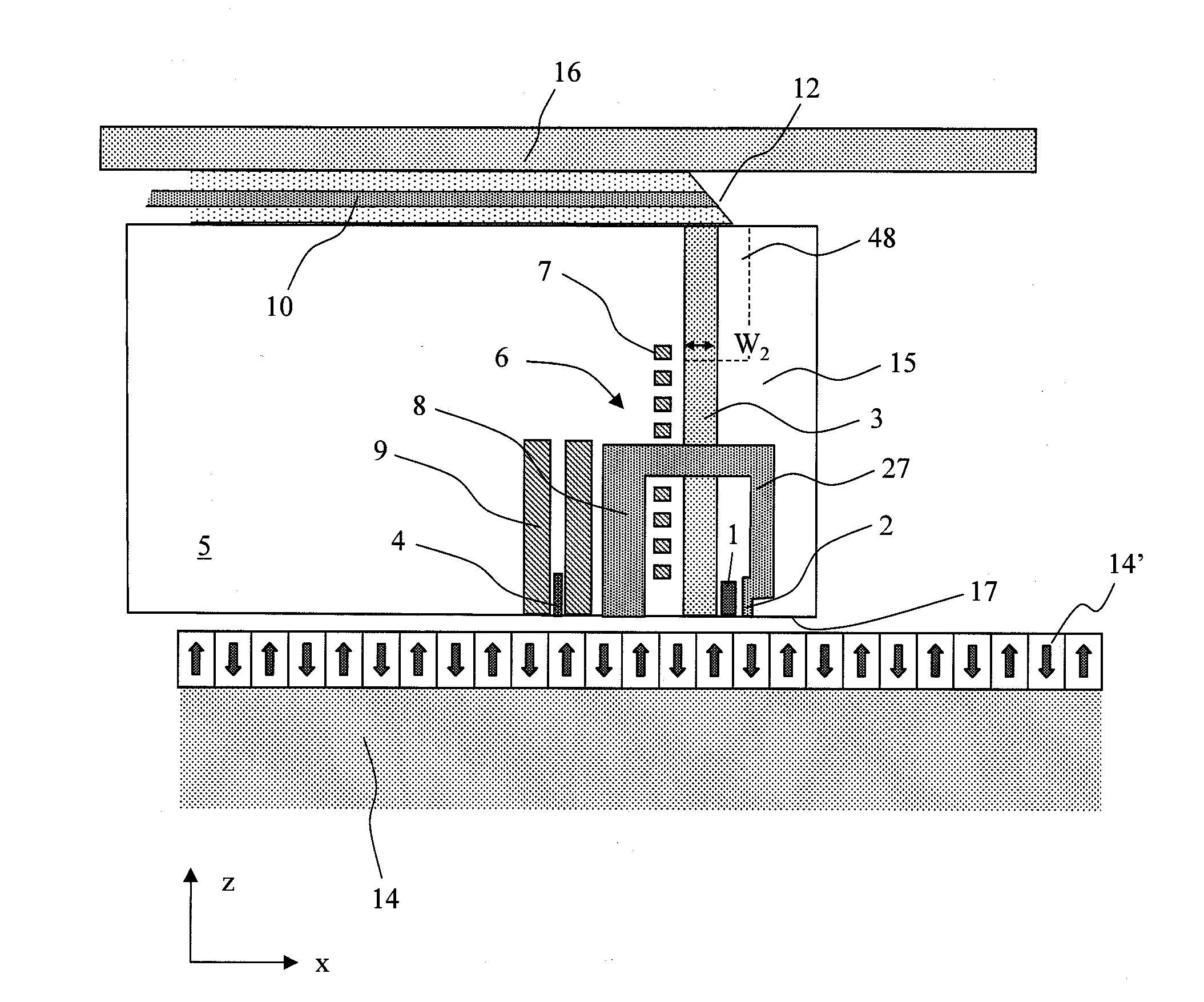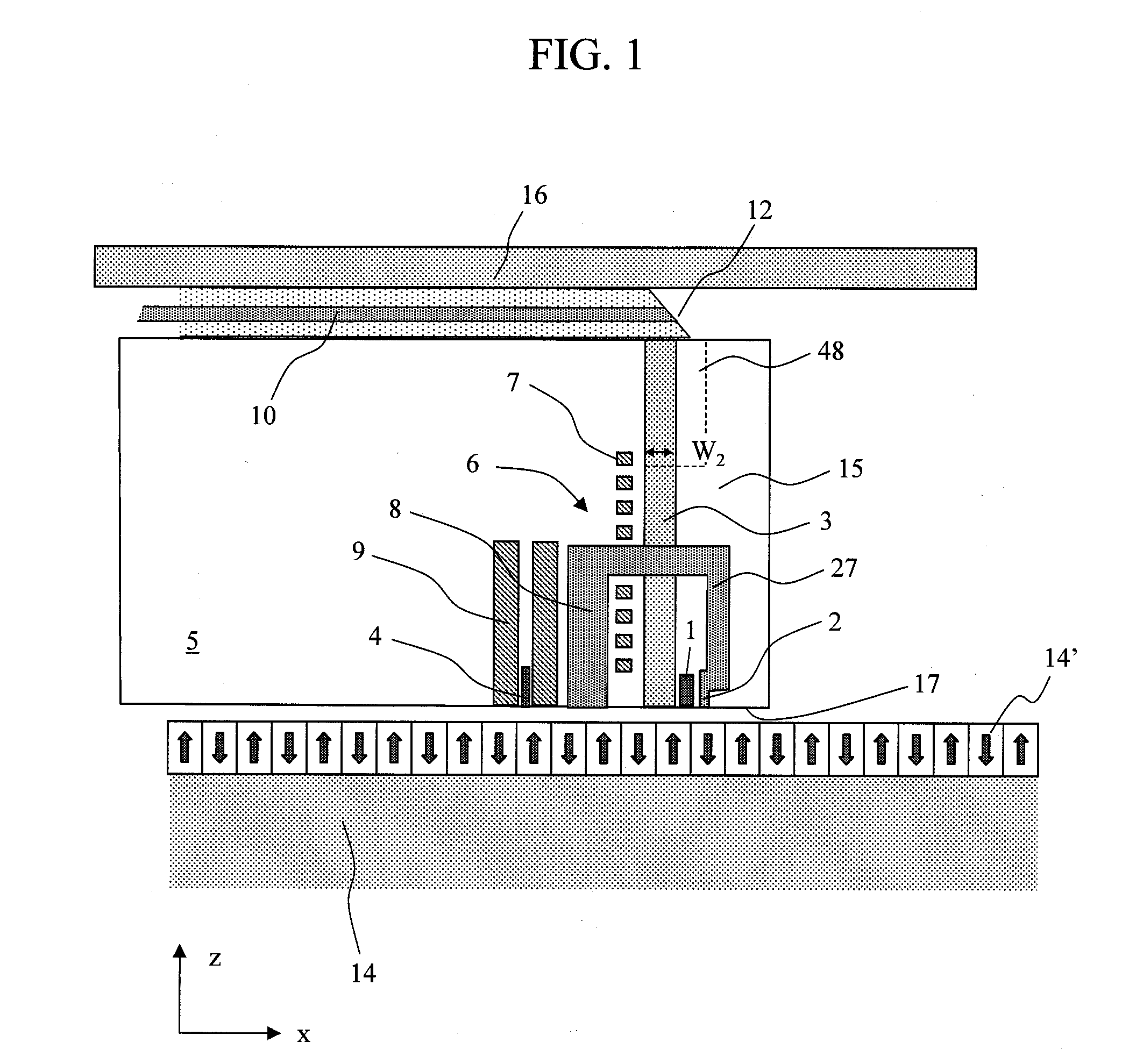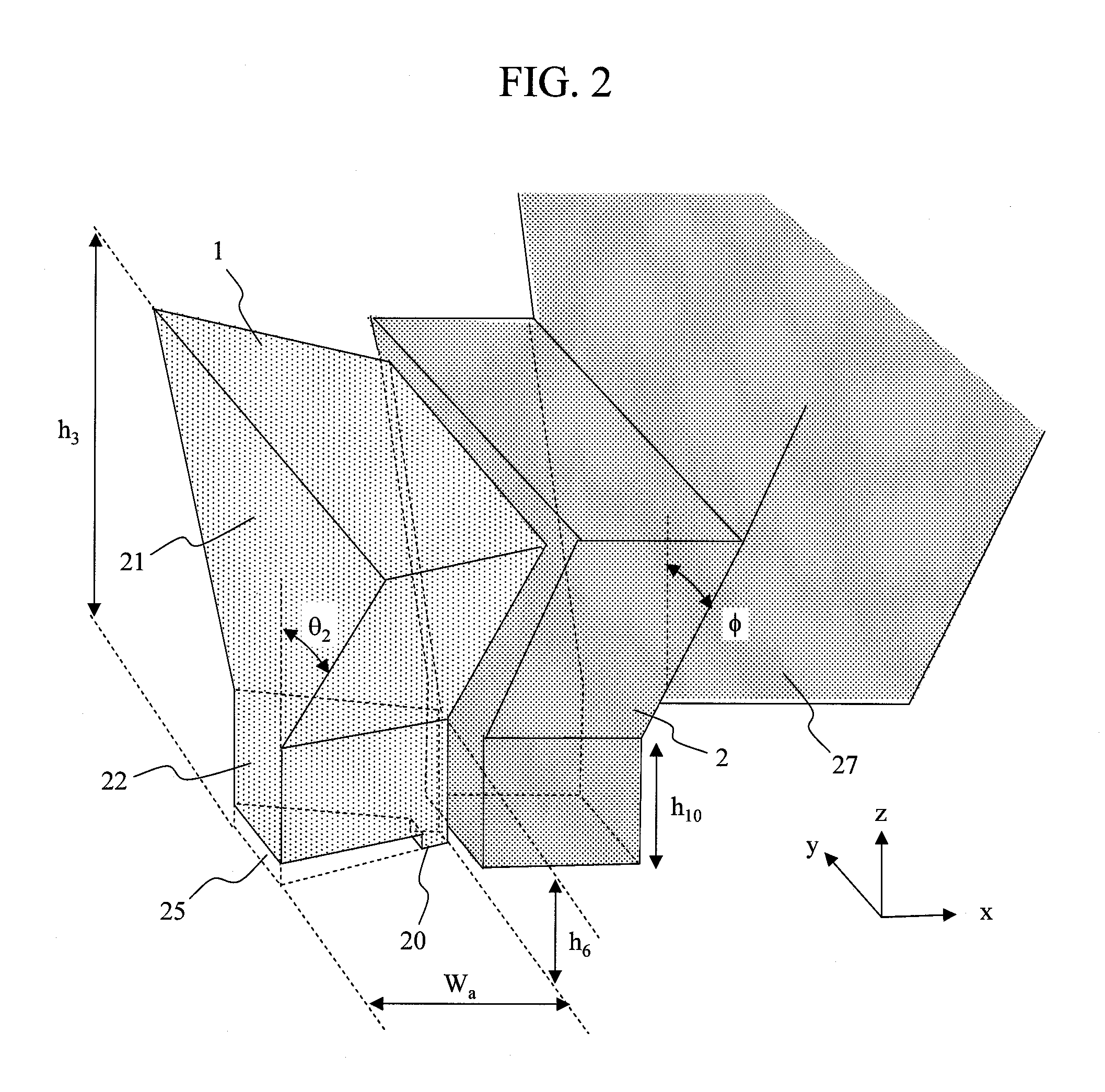Head for thermal assisted magnetic recording device, and thermal assisted magnetic recording device
a recording device and magnetic recording technology, applied in the field of thermal assisted magnetic recording devices, can solve the problems of reducing the efficiency increasing the power consumption inadvertently, and increasing the temperature of elements, so as to achieve the effect of reducing the temperature rise of optical near-field generating elements, reducing the power consumption, and improving the heat radiating performan
- Summary
- Abstract
- Description
- Claims
- Application Information
AI Technical Summary
Benefits of technology
Problems solved by technology
Method used
Image
Examples
Embodiment Construction
[0144]Hereinafter, an embodiment of the present invention will be described with reference to the drawings. In the following drawings, an x direction denotes a track direction, a y direction denotes a track width direction, and a z direction denotes a direction perpendicular to a air-bearing surface. In addition, an example in which a conductive structure is made of metal will be used in the following description.
[0145]FIG. 1 is a schematic cross-sectional view illustrating a configuration example of a magnetic head according to the present invention. The magnetic head according to the present invention includes a thermally assisted magnetic recording head and a reproducing head. The thermally assisted magnetic recording head includes a recording magnetic field generating unit and an optical near-field generating unit. A recording magnetic field is generated by a magnetic head unit 6 made up of a coil 7, a fat magnetic pole 27 for transmitting flux generated at the coil, a main pole...
PUM
 Login to View More
Login to View More Abstract
Description
Claims
Application Information
 Login to View More
Login to View More - R&D
- Intellectual Property
- Life Sciences
- Materials
- Tech Scout
- Unparalleled Data Quality
- Higher Quality Content
- 60% Fewer Hallucinations
Browse by: Latest US Patents, China's latest patents, Technical Efficacy Thesaurus, Application Domain, Technology Topic, Popular Technical Reports.
© 2025 PatSnap. All rights reserved.Legal|Privacy policy|Modern Slavery Act Transparency Statement|Sitemap|About US| Contact US: help@patsnap.com



